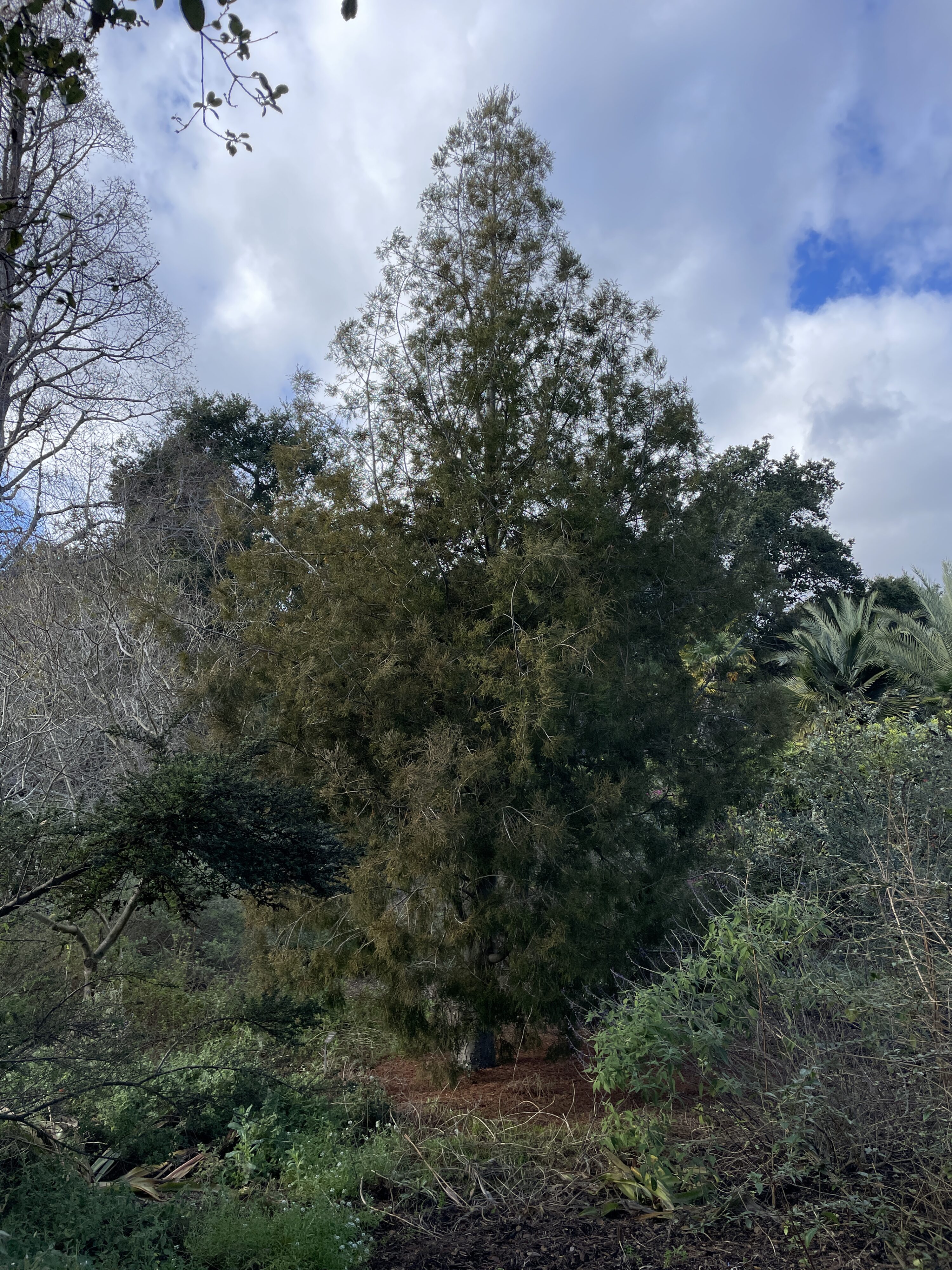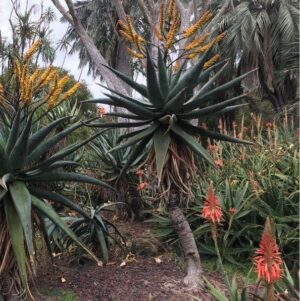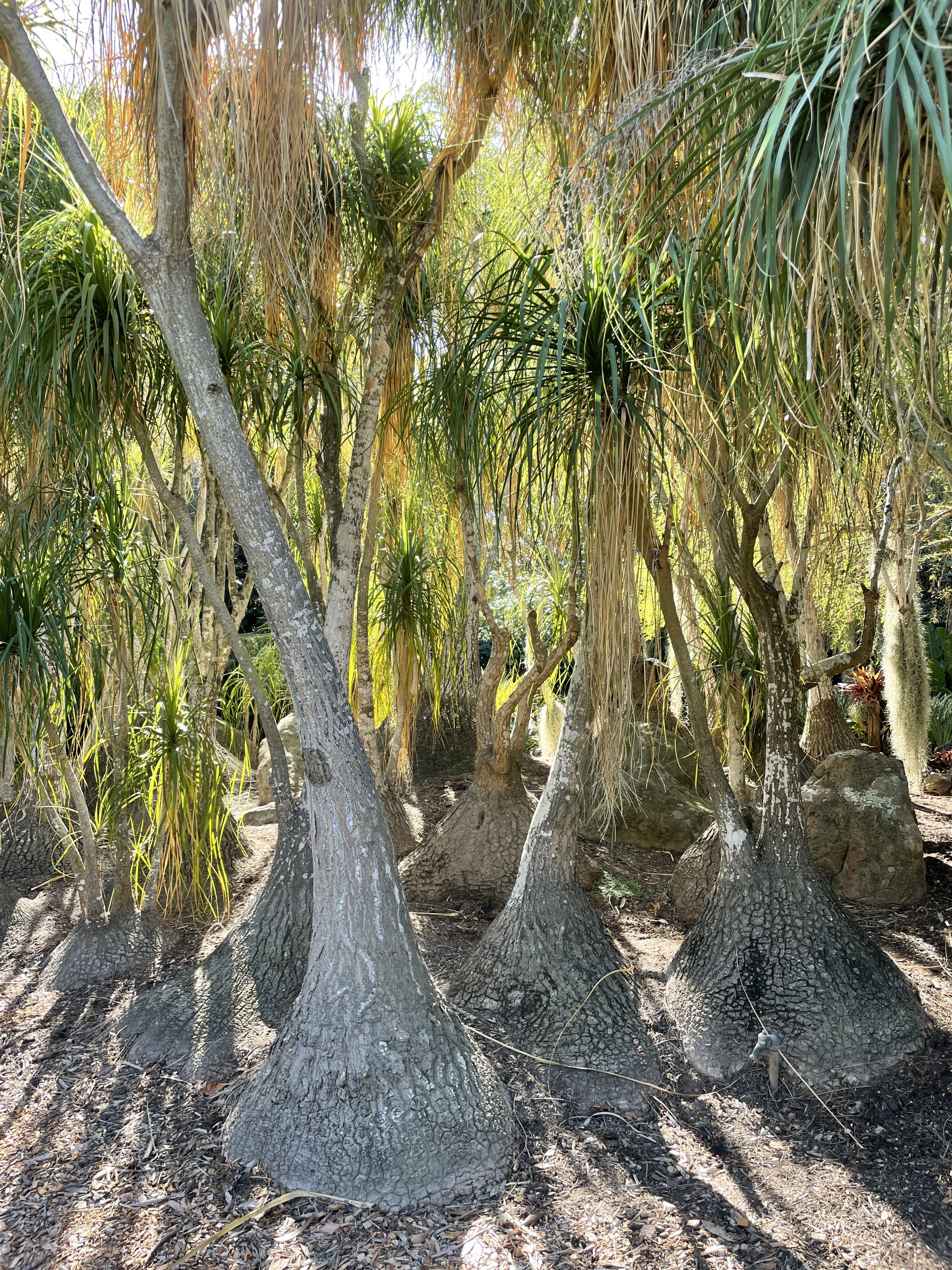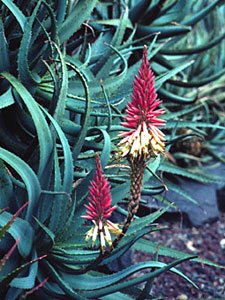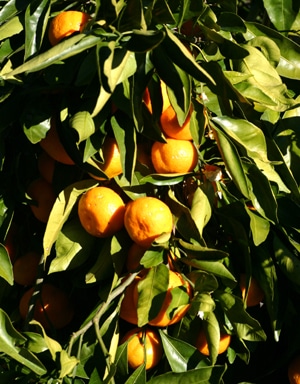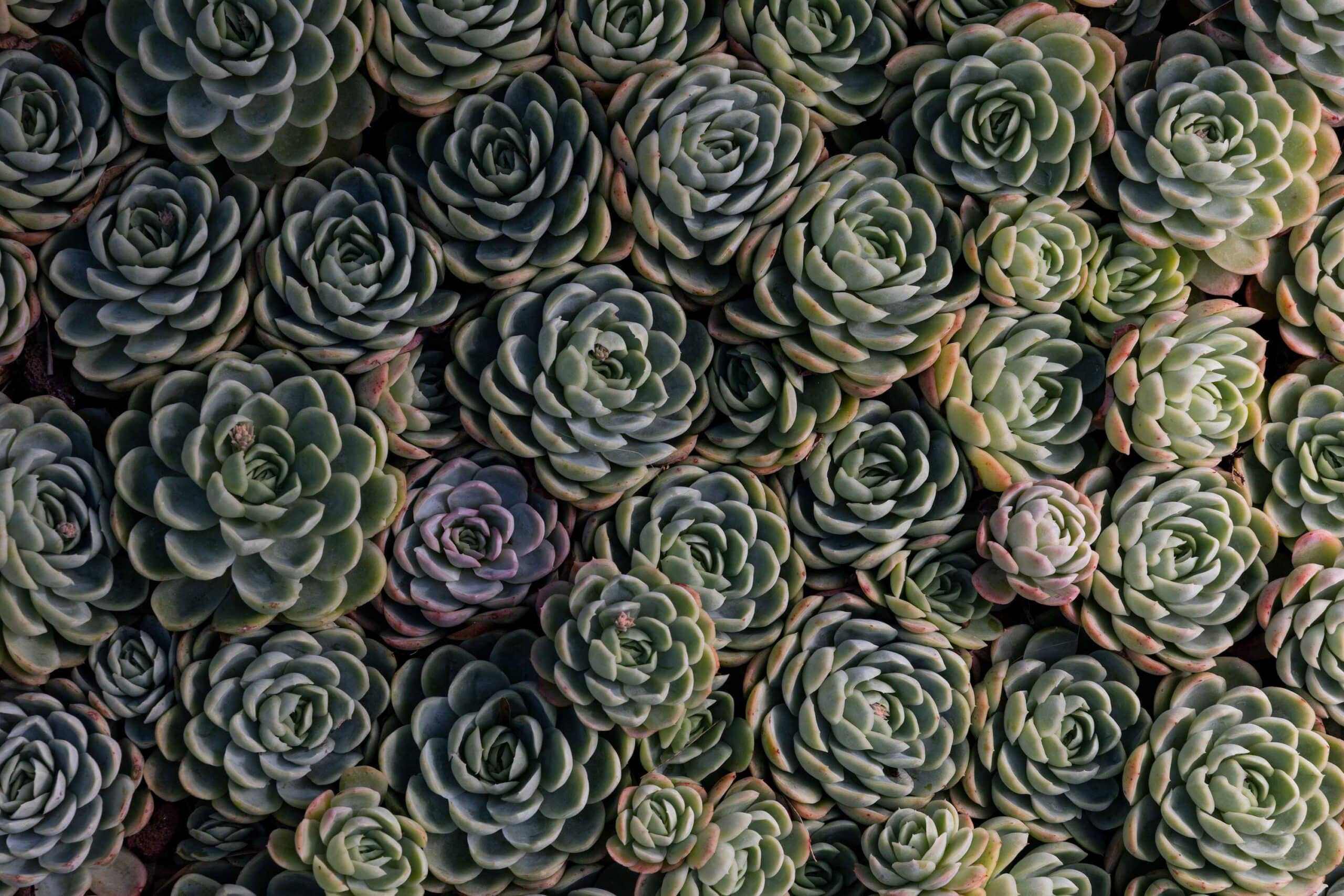
Plant Highlights
January
-
Camellia ‘Minato-no-akebono’
Minato-no-akebono hybrid camellia
Highlight Month:
January
Nativity:
Garden Origin
Growth Habit:
This plant’s understated pink flowers have 5-7 notched petals with darker coloration towards the petal tips. They are borne profusely on this upright shrub from December to March. The entire plant has an open branching habit and can reach 5-9 feet high and 4-8 feet wide.
Growing Requirements:
Prefers regular water, full to part shade, and well-drained soils. It is hardy to USDA Zones 7-10.
Features:
The simple, light pink flowers may appear small on this camellia, but this winter-bloomer is highly scented, perfuming the air around it on a warm winter day with a spicy-sweet aroma. Camellia ‘Minato-no-akebono’ is a hybrid of Camellia lutchuensis, the source of the fragrance, and Camellia japonica ‘Kantō-tsukimiguruma’, adding increased cold hardiness and pink flower coloration. It originates from Yokohama, Japan where it was hybridized by Masaomi Murata in 1981 and officially registered in 1989. The cultivar name translates to “harbor at dawn.”
Where at Lotusland:
Camellia ‘Minato-no-akebono’ can be found in Lotusland’s Japanese Garden near the Torii Landing.
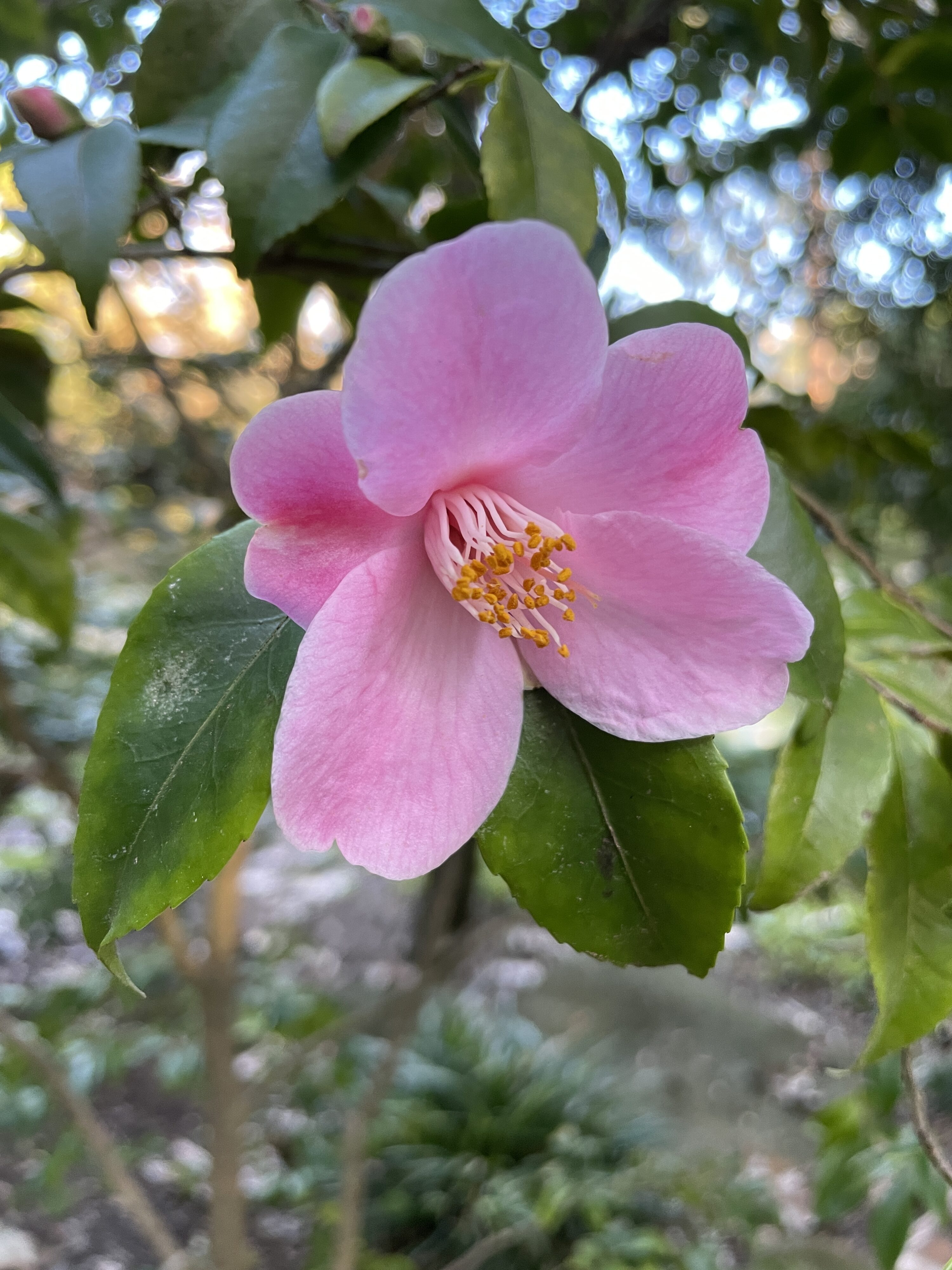
-
Dacrycarpus dacrydioides
kahikatea, white pine, New Zealand dacryberry
Highlight Month:
January
Nativity:
New Zealand
Growth Habit:
The evergreen foliage of kahikatea can vary with age. Juvenile leaves are flat and resemble those of Taxodium spp. (bald cypress), while adult leaves are small, waxy, and appressed to the stem, similar to mature Juniperus spp. (juniper) needles. Trees often display a mixture of the two different foliage types. Young D. dacrydioides, like the specimen at Lotusland, are conical and bushy but mature into tall trees with a buttressed trunk and few lower branches. The bark is dark grey with large ovoid scaly flakes.
Growing Requirements:
This conifer is endemic to the North, South, and Stewart Islands, and is found in alluvial terraces in lowland and montane forests. It can reach over 160 feet in the wild and is a host for many epiphytes. Hardy to USDA Zones 8-11.
Features:
Our tree at Lotusland is male and produces only yellow pollen cones. Female D. dacrydioides form seed atop a fleshy red receptacle. This berry-like structure, or aril, attracts birds who aid in seed dispersal and is a Māori food source called koroī. The genus name comes from the Greek: dacry (tear) and carpos (fruit), referring to shape of the female aril. The specific epithet describes its resemblance to Dacrydium, another closely related genus in the same family.
There are nine species in the genus Dacrycarpus, with a range from southern China to New Zealand (excluding Australia). All are members of the Podocarpaceae or podocarp family. Other species in this family found at Lotusland include: Afrocarpus gracilior, Nageia nagi, Podocarpus totara, P. elatus, P. henkelii, and P. macrophyllus.
Māori legend states this species is a child of Tane, god of forests and birds, and Hine-wao-riki, maid of small forests and protector of the white pine. It is used as a timber source for making waka (canoes), weapons, and tools. Soot from burned heartwood is used for tattoos and the resin is chewed as a gum. Because this species commonly grows in areas suitable for agriculture, many groves were cut down for dairy farming in New Zealand. Remaining populations survive in protected and remote areas. Harvested wood was used to make boxes for butter and cheese exports to Great Britain while a more modern use is for cake boxes, designed to prevent scorching of slow to bake fruitcakes.
Where at Lotusland:
Insectary Garden, to the right of the birdcage.
-
Citrus x junos
yuzu
Highlight Month:
January
Nativity:
Yuzu is an East Asian citrus believed to have originated in central China as a hybrid of Citrus reticulata var. austere (a mandarin orange variety) and Citrus cavaleriei.
Growth Habit:
It is one of the more cold-hardy citrus species and can withstand temperatures down to 10°F. The leaves exhibit a unique broad petiole below the leaf blade and the stems have thorns.
Growing Requirements:
Adaptable to various climates, from tropical to subtropical and Mediterranean. Provide supplemental water throughout the growing season and during dry months.
Features:
There are many varieties of yuzu: hana yuzu (“flower yuzu”, grown ornamentally for its flowers); yuko (a rare yuzu with sweet flesh), and shishi yuzu (“lion yuzu”, grown for its thick knobby skin). The highly fragrant rind and bitter juice are used for drinks and cooking and the essential oils are added to perfumes, lotions, and soaps. Fruits can be used when unripe (green) or ripe (yellow). Yuzu is the main ingredient in yuja-cheong, a Korean marmalade that serves as a base for hot tea. In Japan, whole yuzu fruits are traditionally added to hot baths on the winter solstice.
Where at Lotusland:
Citrus Orchard
-
Aloe marlothii
mountain aloe
Highlight Month:
January
Nativity:
Native to mountainous regions of Mozambique, Zimbabwe, Botswana, and eastern South Africa.
Growth Habit:
This tree-like aloe grows to 10’ tall with large spiny leaves. Old leaves persist to cover the trunk in an attractive “skirt.”
Growing Requirements:
Full sun, well-drained soils. Hardy to 20°F.
Features:
Orange flowers are borne in the winter months on a distinctively branched horizontal inflorescence.
Where at Lotusland:
Aloe Garden
-
Beaucarnea recurvata
pony tail palm, bottle palm
Highlight Month:
January
Nativity:
Central to Southeastern Mexico
Growth Habit:
A single-trunked tree up to 15 feet tall, possibly even taller in very old specimens. Plants will branch more with age, and the trunk base can grow several feet across.
Growing Requirements:
Ponytail palms grow best in full sun with well-drained soil. They are very drought-tolerant and are often grown as houseplants in less temperate areas of the country. In Southern California we can grow this plant outdoors and see it reach much larger proportions.
Features:
Beaucarnea are not actually palms, but are succulents that have a swollen base (caudex) used for water storage. The long, narrow leaves droop down from tufts at the top of the plant. Plants are dioecious, with male and female flowers appearing on separate plants. Older plants will produce clusters of small white flowers that turn into papery seed capsules on female individuals.
Where at Lotusland:
B. recurvata can be found between the Bromeliad Garden and the Main Lawn, where over 75 mature plants grow tightly packed together in a grove.
-
Loropetalum chinense v. rubrum ‘Monraz’
Razzleberri® fringe flower
Highlight Month:
January
Nativity:
The straight species is native to China and Japan. Razzleberri® fringe flower is of cultivated origin.
Growth Habit:
An evergreen shrub growing to between 6 and 10 feet high and as wide. Young plants are often wider than they are tall.
Growing Requirements:
Plant in partial shade to full sun; more shade is required in areas with hot temperatures. Regular watering. Does best in well-drained, acidic to neutral soils.
Features:
This relative of witch hazel has layers of arching branches and small round olive-green leaves. The flowers are white to greenish with twisted fringe-like petals on the straight species. Razzleberri® fringe flower is one of several cultivars having bronze or burgundy colored foliage and bright pink flowers. Flowering is heaviest in late winter to early spring, but some flowers may appear all year long.
Where at Lotusland:
The hummingbird in the Topiary Garden.
-
Aloe mutabilis
small torch aloe
Highlight Month:
January
Nativity:
South Africa
Growth Habit:
Aloes are very drought tolerant and many, such as this one, provide color in the garden during their winter blooming season. It forms rosettes of green leaves at ground level that are about three feet across. It eventually forms clumps with smaller plants forming from the stem of the original. It blooms in winter with red tubular buds that open to pale yellow.
Growing Requirements:
Aloe mutabilis is very easy to grow. It requires full sun and good drainage. Water only to get plants established. It will survive short periods of frost.
Features:
Compared to Aloe arborescens, A. mutabilis is a smaller and bluer plant with more open branching. The flowers on A. arborescens do not change color and remain a reddish orange throughout their development.
Where at Lotusland:
Aloe Garden
-
Euphorbia ingens
tree euphorbia
Highlight Month:
January
Nativity:
Native to Southern Africa
Growth Habit:
This euphorbia is one of the largest of the genus. It grows to height of 30 feet or more as a many-branched tree.
Growing Requirements:
As a succulent member of the genus, the tree euphorbia is extremely tolerant of heat and drought. Plant it in loose soil with good drainage and allow plenty of room for its ultimate size.
Features:
The leafless stems are very dramatic and its fruits are often colorful. Be aware that it has a milky sap that is toxic and can cause skin dermatitis.
Where at Lotusland:
There are several large specimens along the Main Drive and specimens of a particularly interesting weeping form at the entrance to the Main House.
-
Archontophoenix cunninghamiana
king palm
Highlight Month:
January
Nativity:
Australia
Growth Habit:
This stately palm grows at a moderate rate to 60 feet in height. The feather-shaped leaves form a smooth crownshaft as their bases completely encircle the trunk at their base.
Growing Requirements:
Regular water and rich soil. King palms can tolerate freezing temperatures to 24° F.
Features:
King palms have slender trunks and a crown of gracefully arching leaves. Once mature, their pale ivory to violet inflorescences are striking in summer and the numerous bright red seeds that follow the flowers are highly decorative. They are “self-cleaning”, meaning that their fronds drop of their own accord when they are dead.
Where at Lotusland:
Planted in twos and threes along the Main Drive near the Japanese Garden.
-
Citrus species and cultivars
orange, tangerine, lime, lemon, grapefruit
Highlight Month:
January
Nativity:
Garden Origin
Growth Habit:
Most Citrus are medium to small trees.
Growing Requirements:
Citrus trees require frost-free (or nearly so) climates, rich loamy soil and regular water. Full sun produces the most and tastiest fruit.
Features:
While usually quite handsome evergreen trees, citrus are grown almost exclusively for their fruit. The diversity of different types and selections within each type continues to expand. Lotusland’s Citrus Orchard is home to about 25 different cultivars.
Where at Lotusland:
On either side of the Lemon Arbor just south of the Insectary Garden.


